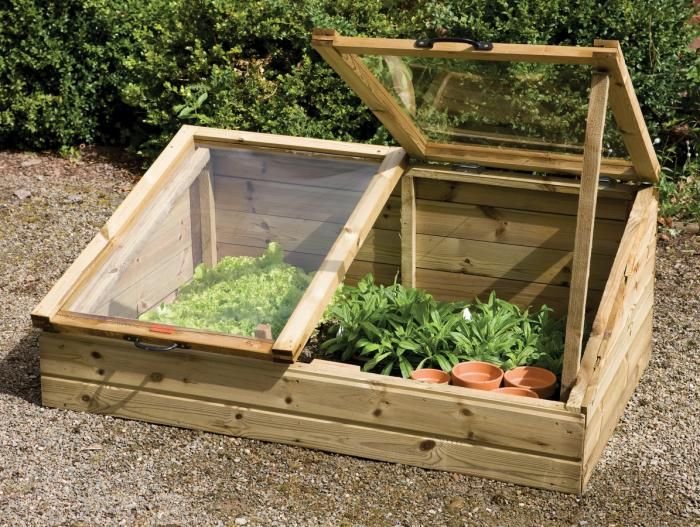Growing Vegetables in a Cold Frame
Image via Pinterest / Gardenista
Gardening enthusiasts are always on the lookout for ways to extend the growing season, especially in regions with cold winters. One highly effective solution for this challenge is the use of cold frames. Cold frames are like mini-greenhouses that provide a controlled environment for your plants, allowing you to grow vegetables even in the chilliest months. In this blog post, we will explore the benefits of cold frames and provide a step-by-step guide to help you grow vegetables successfully in this space-saving and cost-effective solution.
Benefits of Using Cold Frames
1. Extended Growing Season:
Cold frames act as natural incubators, capturing and retaining heat from the sun. This additional warmth enables you to start planting earlier in the spring and continue harvesting well into the fall or even winter, depending on your location.
2. Protection from Frost and Cold:
Cold frames offer your vegetables protection from harsh winter weather, including frost, snow, and frigid temperatures.
They create a microclimate that keeps the temperature inside the frame several degrees higher than the outside environment.
3. Cost-Efficient and Sustainable:
Cold frames are relatively inexpensive to construct or purchase.
They reduce the need for additional heating and lighting, making them a sustainable choice for environmentally conscious gardeners.
Getting Started
1. Choosing the Right Location:
Select a location that receives ample sunlight throughout the day, preferably facing south.
Ensure the ground is level to provide stability for the cold frame.
2. Constructing or Buying a Cold Frame:
Image via pxHere - CC0
DIY Cold Frame: You can build your cold frame using materials like wood, plastic, or old windows. The frame should be slanted to capture the most sunlight and have a hinged top for easy access.
Purchased Cold Frame: There are various pre-made cold frames available on the market. Choose one that suits your needs and budget.
3. Preparing the Soil:
Fill the cold frame with good-quality, well-draining soil. You can mix in compost to enhance fertility.
Ensure the soil is level and slightly mounded to improve water drainage.
Planting and Maintenance
1. Choosing Cold-Tolerant Vegetables:
Cold frames are excellent for growing cold-tolerant vegetables like lettuce, spinach, kale, radishes, carrots, and winter-hardy herbs.
2. Planting Timing:
For early spring planting, start your seeds indoors and then transplant them into the cold frame once the temperature is suitable.
For winter growing, plant cold-hardy vegetables in late summer or early fall to give them time to establish themselves.
3. Temperature Regulation:
Pay attention to the temperature inside the cold frame. On warmer days, consider propping open the lid to prevent overheating.
During extremely cold nights, insulate the cold frame with blankets or row covers to provide extra protection.
4. Watering and Ventilation:
Water your plants as needed to keep the soil consistently moist, but avoid overwatering.
Adequate ventilation is crucial to prevent humidity build-up. Open the lid on sunny days and consider installing an automatic vent opener for convenience.
5. Pest and Disease Management:
Regularly inspect your plants for signs of pests or diseases and take prompt action to address any issues.
Growing vegetables in a cold frame is a fantastic way to maximize your gardening space and extend your growing season, allowing you to enjoy fresh produce even during the coldest months. By selecting the right location, constructing or purchasing a suitable cold frame, and maintaining proper care, you can unlock the potential of this cost-effective and sustainable gardening technique. So, start your cold frame garden today and savor the joy of harvesting homegrown vegetables all year round.
Image via pxHere - CC0



